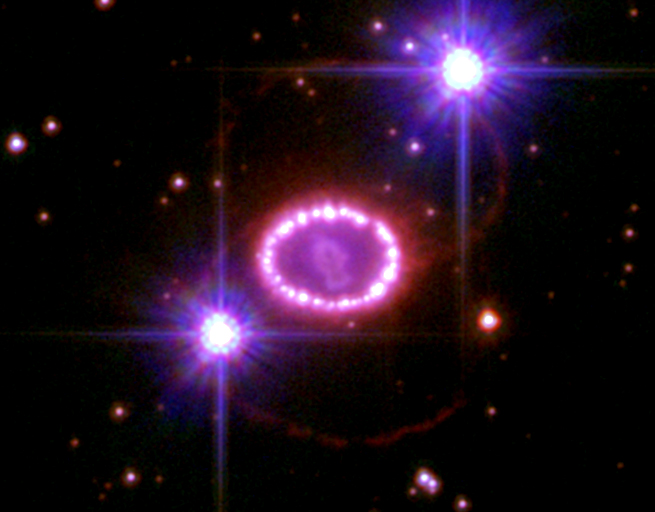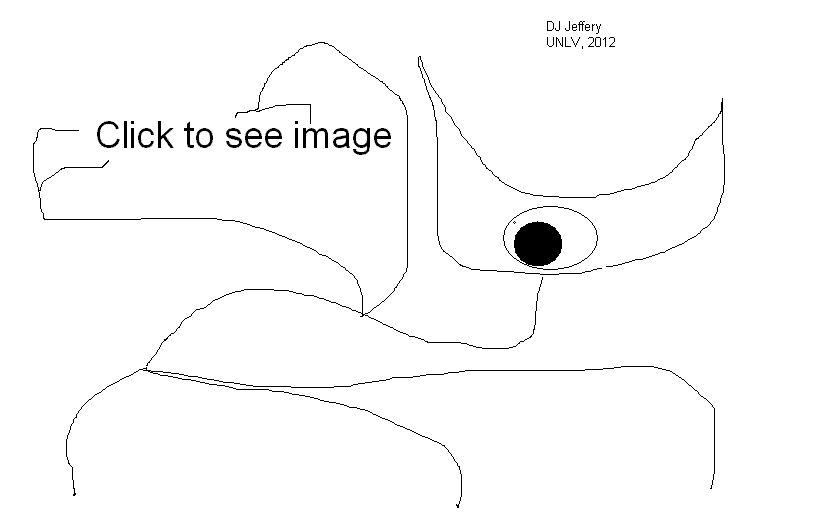
Caption: "Twenty years ago (relative to 2007), astronomers witnessed one of the brightest stellar explosions in more than 400 years. The titanic supernova, called SN 1987A, blazed with the power of 100 million suns for several months following its discovery on 1987feb23. Observations of SN 1987A, made over the past 20 years by NASA's Hubble Space Telescope (HST) and many other major ground- and space-based telescopes, have significantly changed astronomers's views of how massive stars end their lives. Astronomers credit the HST's sharp vision with yielding important clues about the massive star's demise. This HST image shows the supernova's triple-ring system, including the bright spots along the inner ring of gas surrounding the exploded star. A shock wave of material unleashed by the stellar blast is slamming into regions along the inner ring, heating them up, and causing them to glow. The ring, about a light-year across, was probably shed by the star about 20,000 years before it exploded."
This image is, of course, of SN 1987A as a young supernova remnant.
The difference between supernova and supernova remnant may NOT be clearly defined: but a few years after explosion, the object is a remnant to most people.
SN 1987A was peculiar, subluminous core-collapse SN (a Type II SN, in fact).
It was the observationally brightest supernova since SN 1604 (AKA Kepler) because of its proximity: it is in the Large Magellanic Cloud (LMC).
Certainly, there have been closer SNe in Milky Way, but they were missed because, as bright as SNe are, they can be thoroughly extincted in the visible by interstellar dust in the Galactic disk.
The image may NOT true color---it's sometimes hard to know when astro images are true color since the image makers can make images with any color they like---and they use color often to bring out features of interest and NOT trueness often---and what is true color anyway---color is perception in the brain---a combination of out there and in here.
The stars with points are foreground stars in the Milky Way. They are very bright and are saturated, and thus one sees their diffraction pattern with its points.
Credit/Permission: NASA,
ESA,
Peter Challis
(CfA),
Bob Kirshner (1949--)
(CfA),
2007 /
Public domain.
Image link: Wikipedia.


